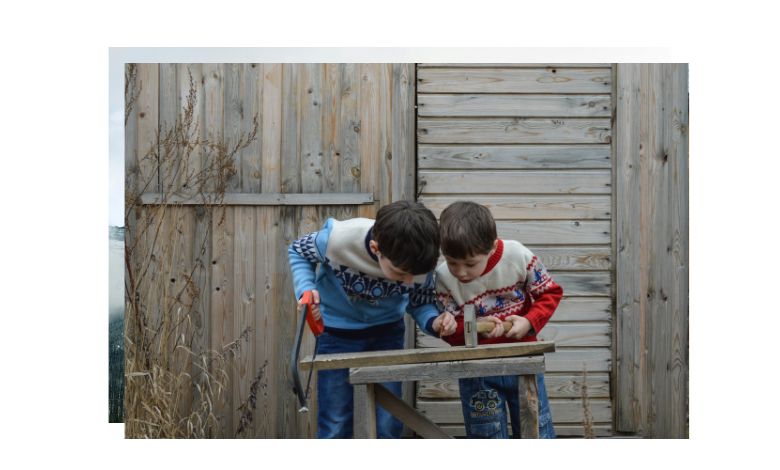Master how to use a compass with this beginner’s guide, step-by-step tips, real stories, and pro advice for confident navigation.
I was 16, full of myself, and hiking alone on a trail I thought I knew. But between admiring the pine tree canopy and chasing what I thought was a fox (it wasn’t), I realised I had no idea where I was. I took out the compass my dad gave me, which he swore by, but I didn’t know how to use it.
It may have been a magic wand.
Ten years later, I can still use that compass to find my way on distant routes, and I’ve taught other people how to use it too. And if you’re here, that probably means you’re eager to learn too, not just in theory but in a method that works.
So let’s go on this trip together. This beginner’s guide is for you if you’re getting ready for a walk this weekend, joining scouting, learning survival skills or just want to know more about this old tool.
What You'll Discover:
What Is a Compass, Anyway?
Let’s start with the basics. A compass is a tool for finding your way that displays you where you are in relation to the Earth’s magnetic poles.
But let’s break that down like we’re talking to our younger selves:
Picture yourself in the middle of a thick forest. There are trees all over the place. No signal for cell phones. There is no sun in sight. Now picture having a magic arrow that always points north. That’s the needle on your compass.
Add some markings, a revolving dial, and a clear baseplate, and you’ve got the greatest friend for a map.
Why You Really Need to Know This
You might be thinking, “Can’t I just use my phone or GPS?”
That’s a completely valid question.
Batteries die, though. Signals go away. I’ve seen phones tumble into rivers. But a compass? It can’t be shaken. It doesn’t need power to work. It doesn’t disconnect. It works.
If you’re old-school like me, think of it as the main plan or the best backup plan.
The Compass Demystified: Learn the Parts
Let’s open this thing up and see what we’ve got.
Here are the key pieces of a basic orienteering compass, which is probably the first one you’ll get:
- Baseplate: The flat, transparent piece you grasp. Usually have lines on them to help you read a map.
- Magnetic Needle: The red part always points to the north pole. That’s your anchor.
- Housing (Bezel): The circle that goes around the needle and is marked with degrees from 0° to 360°.
- Arrow for pointing: Inside the housing. Helps you point the compass in the right direction.
- Arrow for Direction of Travel , On the baseplate. After you set your bearing, you follow this arrow.
- Declination Scale , Not required, but useful. Changes for the difference between true north and magnetic north.
Do you have one? Turn the housing a little bit. Look at how the needle always wants to point north. Isn’t that magic?
How to Use a Compass in Steps
Now let’s get to the point: how to use a compass. I’m going to show you how to do it the way I wish someone had shown me when I got lost for the first time.
Step 1: Find Your Way , In a Literal Sense
Let’s imagine you want to hike to a landmark , like a lake , that you see on a map.
- Put the edge of the compass on the map so that it makes a straight line between where you are now and where you want to go.
- Check that the arrow that shows where you’re going is pointing to your destination.
- Rotate the bezel so that the orienting lines within the housing line up with the north on the map (not the compass needle).
You just set your bearing! You will follow the angle in degrees.
Step 2: Follow the Arrow
- Hold the compass flat in your hand at waist level and swivel your body until the red end of the magnetic needle lines up with the arrow that shows you where to go.
- Your arrow for where you’re going now points to your destination.
- Choose something in that direction, like a tree, rock, or whatever, and walk towards it.
- Do it again as needed: realign, choose a new landmark, and keep going.
Once you get the hang of it, how to use a compass becomes second nature.
The Personal Touch: My First Solo Orienteering Victory
Let me tell you about a trip I took to Wyoming.
I was one of a few people learning how to navigate in the bush. No cell phones. No GPS. Just topographic maps, compasses, and our smarts. Our teacher told us where to find a remote checkpoint, and for once, I wasn’t the one who was following along. I was in charge.
Sweaty palms and all, I shot my bearing, picked my tree, and led the group through heavy undergrowth, up a ridge, and eventually, to a marker tied to a pine limb.
That time? At that same moment, everything fell into place.
Map and Compass: The Power Couple
Using a compass alone is good. But what about using it with a map? That’s a whole other level.
This is how to pair them up:
- Put your map on a level surface.
- Put the compass so that its edge lines up with the map’s edge.
- Turn the compass and map together until the needle points north and the map is straight.
Now that your map is “orientated,” what you see on it matches what you see around you.
Understanding Declination (It’s Not Hard, Don’t Worry)
Declination is the difference between magnetic north and true north. This can be a few degrees or more, depending on where you are in the world.
What does it matter? If you don’t fix it, your compass could lead you off course just enough to miss your destination over a lengthy distance.
Look up your local declination online or on the map you have. Some compasses let you set it permanently, while others let you mentally add or subtract a few degrees.
Can you give me a real-world example? Declination is like the difference between what your GPS says and what you feel in your gut. It’s a minor change, but it may make a big impact over time.
What if You Can’t Find Your Way?
All right. Let’s imagine the worst case scenario.
You have gone off the path. You don’t know where the camp or parking lot is.
Take a deep breath. You have your compass. Here’s how to use a compass when you’re truly lost:
- Stop and orient your map to the north.
- Look around for any landmarks you recognize , a river, mountain, or structure.
- Find that same feature on your map.
- Now use your compass to triangulate , take bearings from two or three known features, and you’ll find your position.
It sounds like a lot, but with a little practice? It becomes your secret superpower.
Common Mistakes (And How to Avoid Them)
We all mess up. But here are a few things to remember:
- Not holding the compass flat – Your needle won’t move correctly if it’s tilted.
- Walking with the map still oriented to you – Always face the map north.
- Following the wrong end of the needle – Red is north, always.
- Forgetting to adjust for declination – Especially important on long treks.
Practice Makes Powerful
You don’t need to be in the Rockies to practice compass skills.
Try this in your local park:
- Set a bearing to a tree 50 feet away.
- Walk to it.
- Now shoot a new bearing from there.
- After a few steps, stop, and shoot a reverse bearing back to your original spot.
Soon you’ll feel like a compass ninja who truly knows how to use a compass in real-world situations.
Quick Checklist: What to Bring on a Compass Hike
Compass with adjustable declination
Topographic map of the area
Ruler or straight edge
Pencil (for marking bearings)
Notebook (tracking steps or bearings)
Patience, curiosity, and a sense of adventure
Key Takings
- Learning how to use a compass changed how I hike, how I explore, and honestly, how I think. It taught me patience, attention to detail, and the confidence that I can find my way no matter what.
- And if a slightly-overconfident, fox-chasing teenager like me could learn it? So can you.
- Grab a compass. Get outside. Get lost , a little , and then find your way back. There’s something deeply empowering about navigating with nothing but your brain, a map, and a magnetized arrow.
- That’s not just old-school. That’s timeless.






